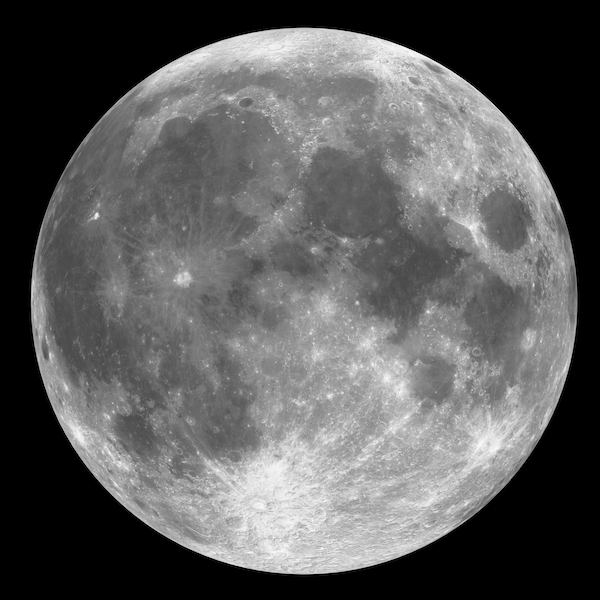A briefcase-sized device housing a powerful laser sounds like a sci-fi gadget, but it is precisely what NASA intends to deploy to search for water and ice on the surface of the Moon. The proposed CubeSat, dubbed “Lunar Flashlight”, will play a key role in locating potential water sources that future NASA missions could tap for deeper space exploration of Mars and other celestial bodies.
NASA’s Artemis mission is moving forward, with the goal of landing the first woman and next man to the Moon’s south pole by 2024. When NASA astronauts return to the Earth’s only natural satellite this time, they will most certainly stay longer than their Apollo counterparts did in the late 1960s and early 1970s; the record stay during the Apollo missions was approximately 74 hours, 59 minutes, 38 seconds.
To achieve longer stays on the Moon, lunar astronauts may tap into the resources from the Moon itself, particularly water and ice, which has already been confirmed to exist in the darkest and coldest parts of its polar regions. This ice can be used for drinking or as rocket fuel. But how? Enter a tiny satellite with big ambitions: Lunar Flashlight.
On April 27, 2020, NASA’s Jet Propulsion Laboratory (JPL) announced the breakthrough Lunar Flashlight technology in a featured article. Lunar Flashlight is a briefcase-sized satellite, also known as a CubeSat, that will be launched later this year. The objective is to map out areas of naturally occurring water and ice in the permanently shadowed regions of the Moon with great accuracy.
What Is The Lunar Flashlight? What Will It Do?
Consider the Lunar Flashlight to be a super powerful spotlight. It will scan the surface of the Moon with a near-infrared (NIR) laser light, beaming down on the surface to assist scientists in their search for water ice deposits near the lunar south pole.
As mentioned previously, water and ice deposits on the Moon’s surface have already been discovered by orbiting spacecraft, but Lunar Flashlight would identify the precise locations of deposits, which could then be mined and used by astronauts who spend extended periods of time on the Moon. It will be the first lunar expedition to use lasers to detect ice.
Because the Moon is almost completely devoid of air, it gets extremely hot in the sunlight (224°F) but very cold in the darkness (-298°F), particularly within the dark, polar craters. Ice molecules can build and remain stable on the surface in those frigid regions indefinitely.
Such icy water deposits on the Moon are of great interest as they can be invaluable for future astronauts staying on the Moon for long periods, or even permanently in base camps. It would be prohibitively expensive to continuously transport water from Earth to the Moon; therefore, taking advantage of the already available resources makes perfect sense.
The Lunar Flashlight will orbit the Moon for two months, pointing its lasers into some of the shadowed craters where ice is confirmed or believed to exist. It will then be able to pinpoint the exact location of frozen water deposits.
How Does Lunar Flashlight Identify Ice?
Lunar Flashlight will beam near-infrared laser light on the surface of the Moon, which will respond differently based on whether it hits frozen water or bare rock.
Any ordinary rock will reflect the laser beam to the satellite. However, if less light is reflected, it indicates that it has been absorbed by frozen water in those pitch-black craters. The less laser beam that is bounced back, the more water there is likely to be. These findings will be compared to those of other orbiters that have previously discovered frozen water on the Moon.
Furthermore, Lunar Flashlight will be the first planetary CubeSat mission to use “green” propulsion, a less hazardous and safer alternative to hydrazine, which is routinely used by most spacecraft.
While the presence of ice on the Moon may sound unusual, scientists are not surprised. Ice can be found in asteroids and, of course, comets. Even Mercury, which is far closer to the sun than the Moon, has icy poles as detected by the MESSENGER spacecraft in 2012.
In addition to Lunar Flashlight, NASA is preparing for two other nanosatellite missions on the Artemis-1 launch. During these missions, Lunar IceCube and LunaH-Map, will make additional measurements from a highly inclined elliptical lunar orbit, looking for water in ice, liquid, and vapor forms at the lunar south pole and on the near side of the Moon. The results of all three missions will be synergistic, investigating the nature and distribution of water and ice on the Moon ahead of human exploration.
Space missions such as Lunar Flashlight will assist NASA astronauts in not only continuing to explore the Moon but also in laying the groundwork for long-term, and eventually permanent, human settlement on our closest neighbor in space.
The Last Word
While the Moon is our closest celestial neighbor, our understanding of what lies beneath its surface is limited. The exact composition of the lunar surface, particularly in deeper craters, remains a mystery. However, the Lunar Flashlight will change that by using laser beams to look for frozen water on the Moon.
Universe Kogaku has an incredibly talented engineering team that can design and manufacture Laser Lens assemblies and elements. If you need premium custom lenses for your space satellite, please call 1-516-624-2444 or email info@universeoptics.com. One of our trained lens application engineers will get back to you as soon as possible.